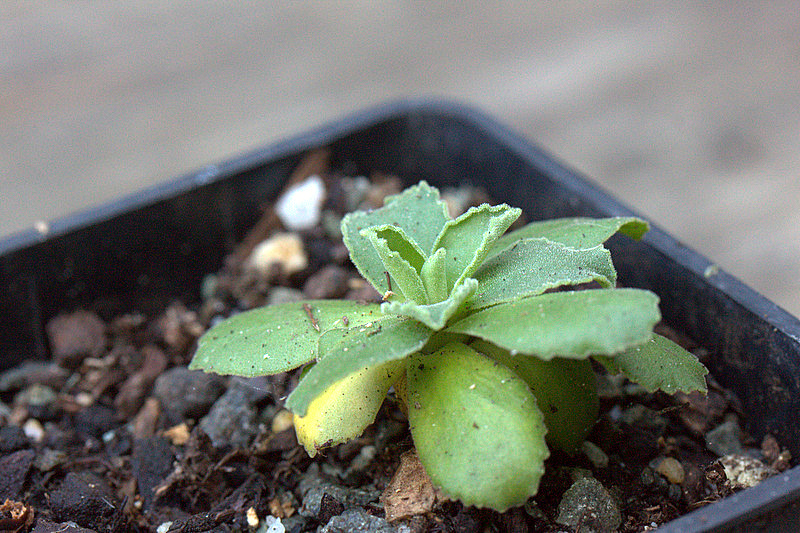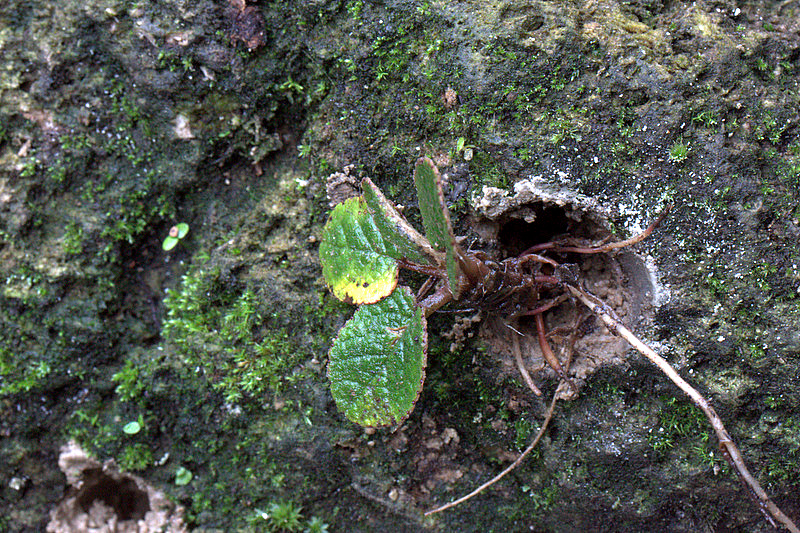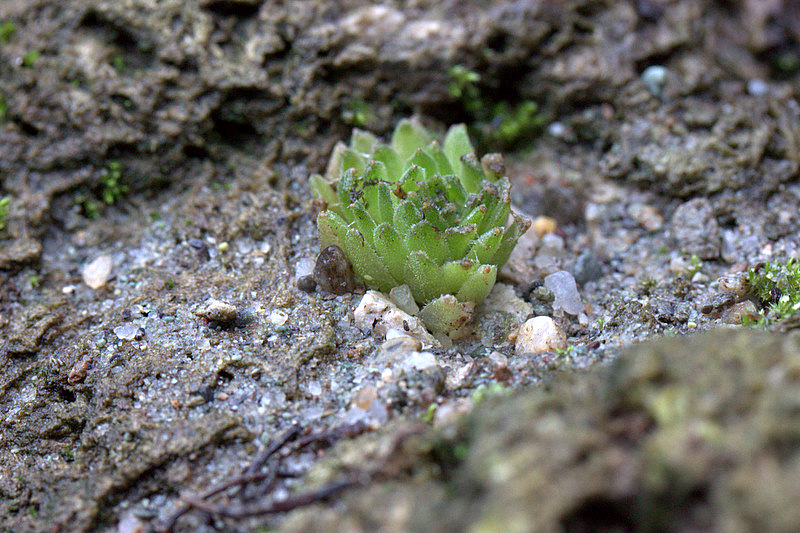My son and his family visited the volcanic area of the North Island ,(NZ),back at Xmas time and wanting to experiment with planting in a rock block I asked them to keep an eye out for some largish pieces of pumice.
They bought home 3 rocks ,two of them with angular sides ,(from high up on the banks of a stream), while the remaining one was from a lake front ,very smooth and rounded ,showing what I presume was the result of wave activity.
Finally planted up the largest block last weekend and the following pics show the process and some of the cuttings/seedlings used.
I was surprised, firstly on how soft the material was , (so I was able to quickly drill 16 holes), and then also at the high moisture level of the rock,(it had been dumped on the ground in a shady spot for the last 6 months).
Initially I had planned to plant out using a number of very small Lewisia tweedyii seedlings to see if I could over winter them outside, however I ‘chickened out’ :rolleyes: deciding I'd use the second smaller angular rock for that purpose at a later date once it dried out somewhat.
Will be interesting to see how successful this all turns out ;D--did i drill the holes too big? :-\--were some of the cuttings too large ? :-\--should i have been more adventurous in the selection of plant material ? :-\----- and in respect of the eventual Lewisia tweedyii planting ,will my 1 metre of rainfall pa be a problem ?.....
In any case my difficulty at the moment is figuring out how to incorporate the finished rock into the garden or ……maybe a largish trough….
Cheers Dave.








Comments
Richard T. Rodich
Re: Planting of a pumice block.
Fri, 06/15/2012 - 6:06amThanks, Dave. I am a complete novice at something like this. Did you drill completely through the rock? Would you have to worry about the pockets filling with water? I've never even seen what "wild" pumice looks like before this. I am looking forward to pics of the angular pieces, too.
Trond Hoy
Re: Planting of a pumice block.
Sat, 06/16/2012 - 1:07amPumice doesn't exist here either except on beaches as this kind of lava floats! However I have only found small pieces at the beach and not big enough to plant in.
Interesting experiment, Dave.
Toole (not verified)
Re: Planting of a pumice block.
Sat, 06/16/2012 - 3:56amI'm a novice as well Rick.....
Most of the holes were about 10 to 12cm in depth and although i have some concerns about the moisture content i understand Pumice has a high porosity level so the pockets filling with water shouldn't be a problem --the plants were wedged in tight with a mixture of river sand and small slivers of pumice i had chipped off from the bottom of the rounded smooth piece.
Here's a pic of the 3 pieces and a closer look at one of the drilled holes.
The last two photos are of a lump of 'hypertufa' that was given to me recently and although there is a reasonable amount of peat mixed in with the cement the drilling was a lot more difficult .
The lump is hollow so i drilled right through.
I might place it on a mound of river sand--ensuring there are no air gaps underneath will require some effort.(I've just had a thought :rolleyes:--if i fill it while it's upside down and place a piece of ply on top then i should be able to carefully turn it over and then slide the ply out from underneath....... :-\ :-\ ).
Also as i wanted a more established look i made the holes a lot wider so i could plant out larger plants . The last pic shows the thickness of the walls.
If i remember correctly there is an article by Eve Whittmore in an old NARGS bulletin showing how she used this principle for planting out Cacti in her North Carolina ? garden --although i could be a bit confused as she kindly sent me a set of slides of their new,(at the time), garden and it could have been in those.
Cheers Dave.
cohan (not verified)
Re: Planting of a pumice block.
Tue, 08/14/2012 - 4:05pmVery interesting, Dave- looking forward to updates!
UDJim (not verified)
Re: Planting of a pumice block.
Wed, 09/05/2012 - 1:56amI've been experimenting with volcanic stone called "feather rock", which is soft and porous. Since it's essentially volcanic glass, it's very unkind to skin, so gloves are a must, and a mask is useful against the dust from drilling, sawing, etc.
It's readily available at my local nursery, but the softness of the rock results in pieces that are fairly devoid of character after all the jostling and rubbing together during shipping. I buy the largest stones I can handle, then study the grain carefully before breaking into more manageable pieces. This releases the rock's character and begins to suggest how to use it to best advantage. This can be both fascinating and humbling, since one quickly learns to work with the rock, not against it.
I invite you to view some examples at www.jimmueller2002.com
Toole (not verified)
Re: Planting of a pumice block.
Wed, 09/05/2012 - 2:26amVery artistic Jim.
Cheers Dave.
cohan (not verified)
Re: Planting of a pumice block.
Thu, 09/06/2012 - 11:11amInteresting work, Jim, thanks for sharing. The use of reclaimed materials is also very interesting..